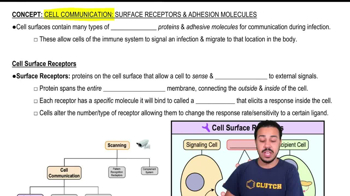Textbook Question
In which of the following cavities do serous membranes envelop the organs?
(Circle all that apply.)
a. Mediastinum
b. Pericardial cavity
c. Peritoneal cavity
d. Abdominal cavity
e. Pelvic cavity
f. Pleural cavity
443
views
 Verified step by step guidance
Verified step by step guidance Verified video answer for a similar problem:
Verified video answer for a similar problem:



 2:51m
2:51mMaster Organization of the Thoracic Cavity with a bite sized video explanation from Bruce Bryan
Start learning